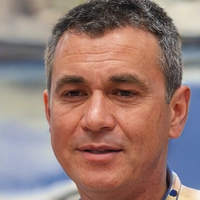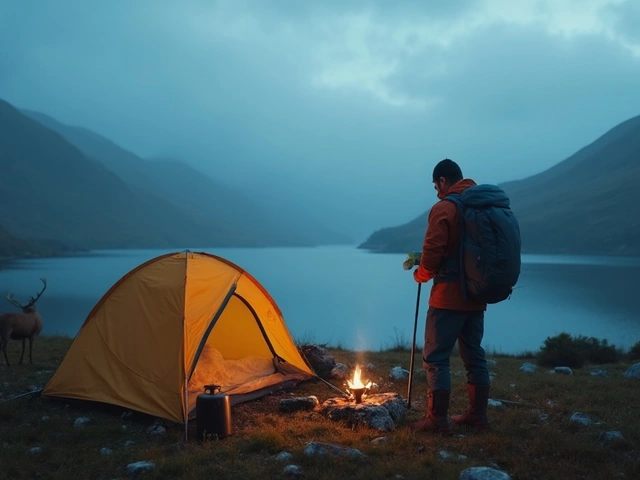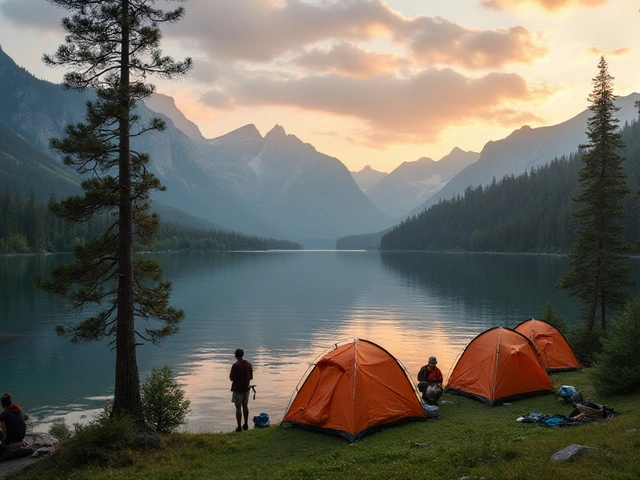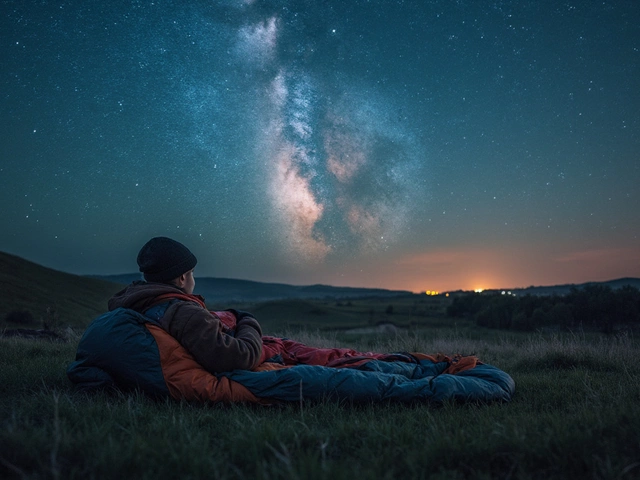Glamping Cost Calculator
Calculate Your Glamping Cost
This is an estimate based on typical pricing. Actual costs may vary depending on location, season, and specific provider.
When you picture a night under the stars but with a king‑size bed, a hot shower, and gourmet meals, the term you’re hunting for is glamping. It blends the thrill of outdoors with the comfort of a boutique hotel, and it’s the go‑to phrase for anyone describing upscale camping experiences.
Key Takeaways
- Glamping is the widely accepted word for luxury camping.
- The term first appeared in the early 2000s, merging “glamorous” and “camping”.
- Typical glamping accommodations include safari tents, yurts, treehouses, and boutique cabins.
- Glamping differs from traditional camping in amenities, services, and price point.
- Knowing the term helps when booking, searching online, or discussing upscale outdoor stays.
What is Glamping?
Glamping is a portmanteau of "glamorous" and "camping" that describes a style of outdoor lodging offering hotel‑level comforts while preserving a connection to nature. It can range from a fully equipped safari tent with air‑conditioning to a designer yurt with polished wood floors. The core idea is the same: you get the experience of being outdoors without sacrificing sleep quality, privacy, or basic conveniences.
How Did the Word Come About?
Travel writers began using the term in the early 2000s, especially after a series of articles in British outdoor magazines highlighted high‑end tented retreats in the African savanna. By 2005, the phrase appeared in mainstream media and quickly spread online. The rise of social media platforms, where photos of Instagram‑ready tents gathered likes, cemented glamping as a cultural phenomenon.
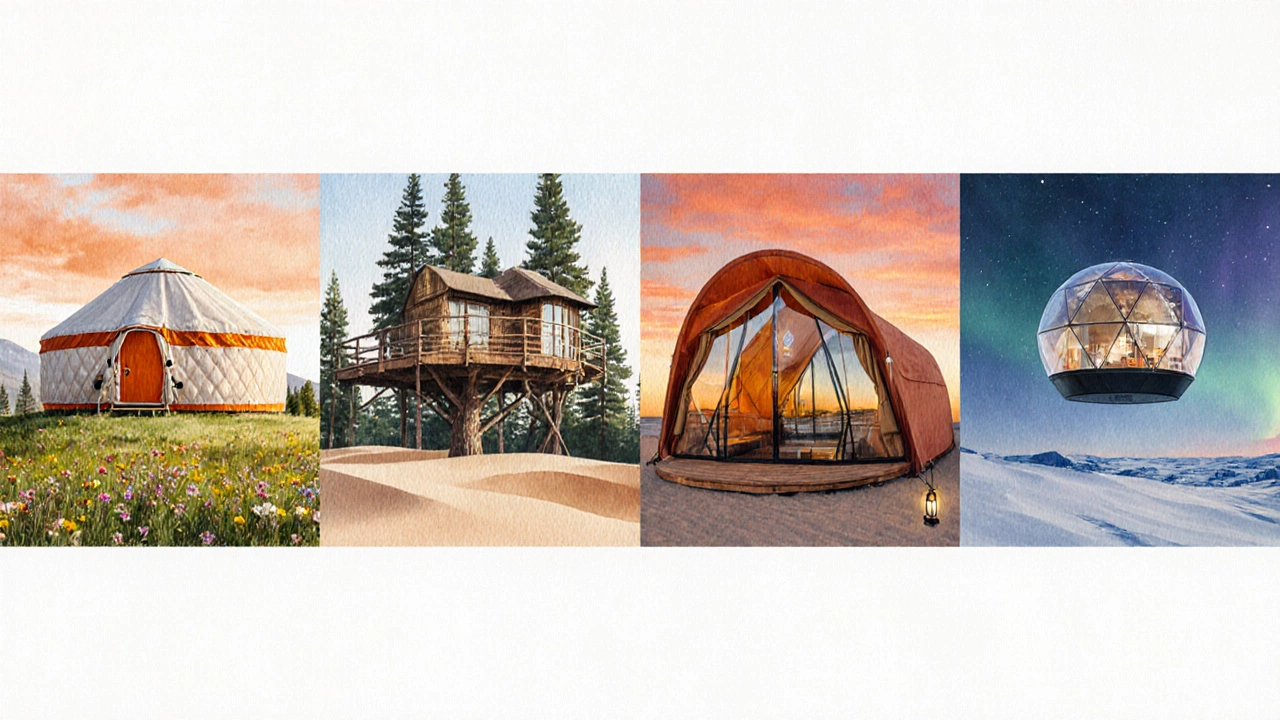
Related Concepts and Their Differences
While glamping is the umbrella term, several related concepts often cause confusion. Below is a quick breakdown of each.
- Camping is the traditional activity of staying in a tent or RV, typically with minimal facilities.
- Luxury camping is a descriptive phrase that overlaps with glamping but isn’t a single word.
- Safari tent is a canvas structure on a wooden frame, often equipped with beds, electricity, and en‑suite bathrooms.
- Yurt is a circular, portable dwelling originating from Central Asia, now modernized with insulation and furnishings.
- Treehouse offers elevated sleeping pods built among branches, frequently featuring full kitchens and decks.
- Boutique campsite refers to small, curated sites that focus on design, privacy, and curated experiences.
- Eco‑lodge blends sustainable building practices with upscale amenities, often located in protected natural areas.
Glamping vs. Traditional Camping: A Comparison
| Aspect | Glamping | Camping |
|---|---|---|
| Accommodation | Safari tent, yurt, treehouse, boutique cabin | Canvas tent, hammock, basic RV |
| Bed comfort | Real mattress, linens, pillows | Sleeping bag or air mattress |
| Facilities | Private bathroom, heating/cooling, Wi‑Fi | Shared or no facilities, rely on campgrounds |
| Cost per night | $150‑$500 (varies by location and unit) | $20‑$50 (basic sites) |
| Typical guest profile | Couples, families seeking comfort, event planners | Backpackers, outdoor enthusiasts, budget travelers |
Popular Glamping Styles Around the World
- Safari Tents - Common in African game reserves and now popping up in U.S. desert resorts. They often feature canvas walls, wooden decks, and en‑suite bathrooms.
- Yurts - Found in the Mongolian steppe originally, modern yurts appear in European mountain valleys and American national parks, equipped with insulation and heating.
- Treehouses - Popular in forested regions of the Pacific Northwest, Costa Rica, and Thailand. Many come with floor‑to‑ceiling windows for sunrise views.
- Glass Pods - Transparent cabins that let guests sleep under the stars without the chill. Scandinavian designers pioneered them, and they’re now seen in Iceland and Canada.
- Off‑Grid Cabins - Tiny wooden structures powered by solar panels, offering a minimalist yet luxurious feel in remote locations.
How to Use the Term Correctly
When talking about your next upscale outdoor getaway, drop the word glamping in these contexts:
- “We booked a glamping site in the Lake District that had a heated yurt and private chef.”
- “The festival offered glamping pods with queen‑size beds and a shared lounge.”
- “If you love nature but hate roughing it, try glamping-comfort meets wilderness.”
Avoid using “glamping” to describe any regular campsite; the term implies a higher level of service and amenities.
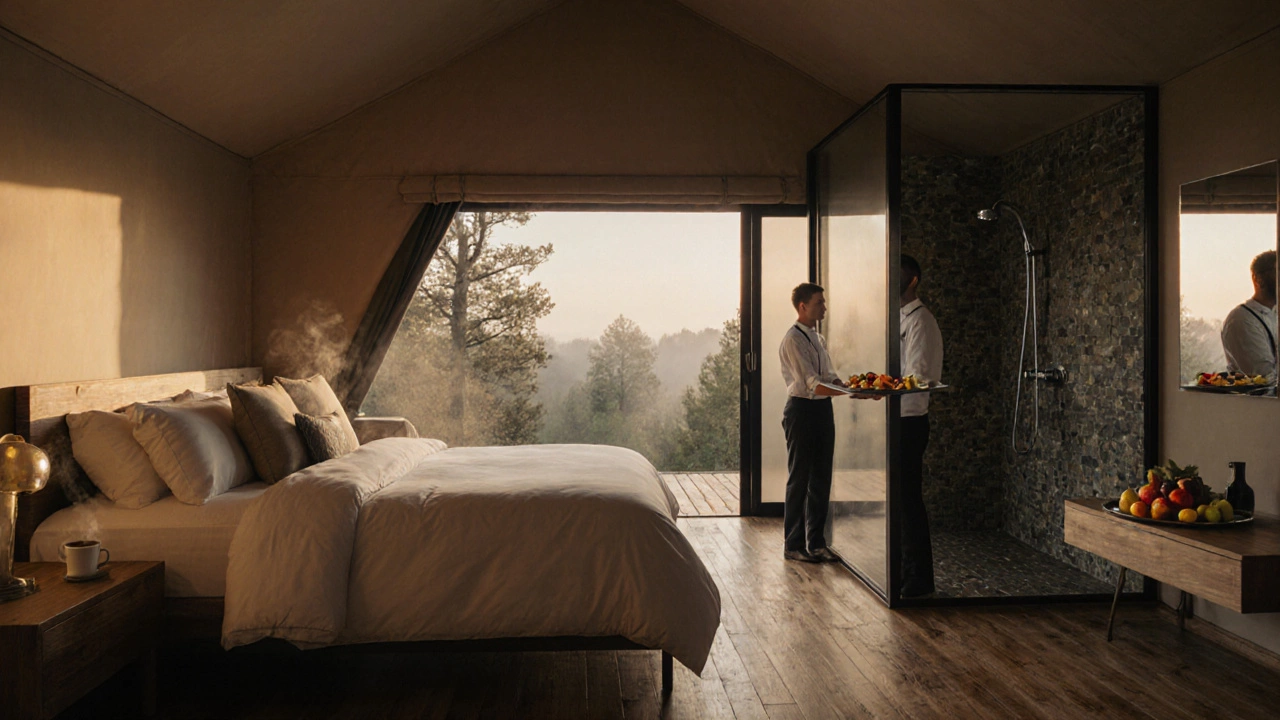
Finding Glamping Locations
Most tourism boards now have a “glamping” filter on their accommodation portals. Search terms like “glamping near me,” “luxury tented safari,” or simply “glamping” on major travel sites will pull up curated listings. Look for the following signals that a site truly offers glamping:
- Professional photos showing furnished interiors.
- Clear mention of private bathrooms, heating/cooling, and housekeeping.
- Guest reviews emphasizing comfort, not just scenery.
In the UK, the “Luxury Campsites” category on our site already aggregates many vetted glamping spots, ranging from coastal yurts in Cornwall to forest treehouses in the Lake District.
Pros and Cons of Glamping
Like any travel choice, glamping has trade‑offs.
| Pros | Cons |
|---|---|
| Comfortable sleep and private facilities | Higher cost compared to traditional camping |
| Beautiful natural settings with minimal setup | Limited availability during peak seasons |
| Often includes extra services (breakfast, tours) | May feel less ‘authentic’ to hardcore campers |
| Environmentally friendly designs (solar, composting) | Travel distance to remote sites can be longer |
Frequently Asked Questions
Is “glamping” a real word?
Yes. Dictionaries such as Oxford and Merriam‑Webster now list glamping as a recognized term for upscale camping.
What’s the difference between a glamping tent and a regular tent?
A glamping tent usually includes a solid floor, insulated walls, electricity, heating or cooling, and a private bathroom, whereas a regular tent is just canvas with no built‑in amenities.
Can I bring my own food to a glamping site?
Absolutely. Most glamping locations provide a kitchen or kitchenette, so you can cook your own meals. Some even offer on‑site chefs if you prefer a fully catered experience.
Are glamping sites pet‑friendly?
Many are, but policies vary. Look for listings that specifically mention “pet‑friendly” and check any additional fees.
How much does glamping usually cost?
Prices range from $150 to $500 per night, depending on location, accommodation type, and season. Luxury resorts in exotic destinations can exceed $1,000 per night.
Next Steps for Readers
If you’re convinced that glamping is the experience you want, follow these quick actions:
- Identify your preferred environment - beach, forest, mountain, desert.
- Search using the keyword “glamping” plus your destination (e.g., “glamping Cornwall”).
- Compare amenities by checking the site’s photo gallery and guest reviews.
- Book early, especially for peak holidays, to secure the best unit.
- Pack light: bring breathable clothing, a reusable water bottle, and any personal toiletries you like.
Happy glamping!

